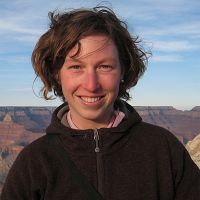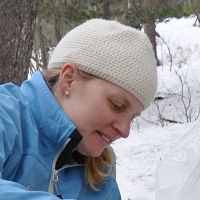Hinckley et al., 2014
Nitrogen retention and transport differ by hillslope aspect at the rain-snow transition of the Colorado Front Range
Hinckley, E.-L., Barnes, R.T., Anderson, S.P., Williams, M.W., and Bernasconi, S. (2014)
Journal of Geophysical Research Biogeosciences 119(7): 1281-1296
-
Boulder, INVESTIGATOR
-
Boulder, INVESTIGATOR
-
Boulder, INVESTIGATOR
-
Boulder, INVESTIGATOR
Abstract
Over a decade of research in the alpine zone of the Colorado Front Range has shown that atmospheric nitrogen (N) deposition originating from source areas in low elevation, developed areas, has changed ecosystem stoichiometry, nutrient transformations, and aquatic community structure. Less research has occurred in the montane zone, which sits at the current rain-snow transition and is vulnerable to climate change, land cover disturbances, and increased N loading. We conducted lithium bromide and 15N-nitrate (15NO3−) tracer studies during spring snowmelt to determine the immediate fate of N in a forested catchment. Measurements of N species and applied tracers in ecosystem pools and soil solution on north and south facing slopes provided a means of determining export pathways and uptake of deposited N. Our results indicate that NO3− residence time is longer within north than south facing slope soils, due to longer contact with the soil matrix, greater microbial biomass N, and a larger soil organic matter pool. On the north facing slope, >50% of the 1 kg ha−1 of 15NO3− applied was retained in soil and vegetation pools. On the south facing slope, rapid transport during sporadic snowmelt events reduced total recovery of the 15N label in ecosystem pools to 16–34%. Our results suggest that snowmelt events quickly transport N through south facing slope soils, potentially contributing more N to aquatic systems than north facing slopes. Thus, it is important to consider how the fate of N differs by hillslope aspect when predicting catchment-scale N export and determining ecosystem N status across the Colorado Front Range.
Citation
Hinckley, E.-L., Barnes, R.T., Anderson, S.P., Williams, M.W., and Bernasconi, S. (2014): Nitrogen retention and transport differ by hillslope aspect at the rain-snow transition of the Colorado Front Range. Journal of Geophysical Research Biogeosciences 119(7): 1281-1296. DOI: 10.1002/2013JG002588
 This Paper/Book acknowledges NSF CZO grant support.
This Paper/Book acknowledges NSF CZO grant support.
Explore Further




